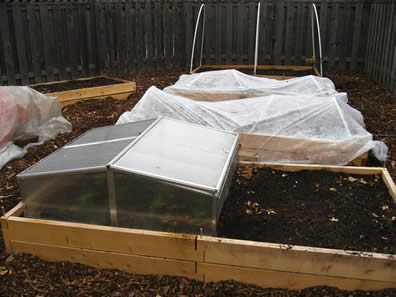Tips on Preparing Your Garden for Winter and Freezing Temps
Is winter fast approaching? Are nights getting colder? Here at Gertens, we provide tried and true tips on preparing your garden for winter and freezing temps. Use these easy solutions to keep your plants happy and healthy.
Why and when do we cover our annuals? During a light freeze, between 34 and 32 degrees, you should cover your annuals at night. The night temperatures can drop to levels where plant tissue and flower buds can be damaged and not open. If you were to cover annual plants at this stage, you could expect blooming for a few more weeks.
Pansies and kale enjoy a cooler environment and can handle light frosts and do not need to be covered. Once the night temperatures drop to between 32 to 28 degrees, the pansies and kale should be covered to survive the night.
When the threat of freezing temperatures pass, once the sun comes up in the morning, you should uncover your plants so that they do not get to warm and you are able to enjoy them.
 |
| Once night temperature's drop below freezing, tomatoes, pansies and kale should be covered. |
Tomatoes?
If temperatures are going to improve, with more consecutive days and nights of warmer temps, I would recommend covering your tomato during a light frost. If night temps are expected to remain cold and around freezing (32-28 degrees) it is best to pick the tomatoes off the vine and have them ripen indoors. The light green or pink tomatoes will ripen indoors as long as they are not placed in direct sunlight and the temp indoors does not dip below 55 degrees. Another way to ripen the fruit is to pull the whole plant out of the ground and hang upside down in indirect light.
What can I use to cover my plants? A Grow Station Hobby Greenhouse, light sheet or bedspread, a cardboard box, or straw are all good options to cover your tender plants.
Tree Stress and Early Fall Color:
If trees are exhibiting early fall color, although it is beautiful, it is a sign that things may not be well within the plant. Early fall color is a sign of stress that could be caused by insects, diseases, or just a tough growing season. This is a good indication that some attention should be paid in the fall by supplemental watering if it has been dry and also in the following spring. After winter the plant may exhibit some tip dieback, some entire branches may not come back or the plant may not leaf out completely. The tree may need to be checked out by an arborist, or may need some extra fertilizer or pruning in the spring.
